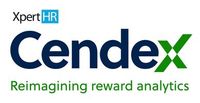Q&A: Debra Corey on how to design a reward offering that is fit for the future

We talk to Debra Corey, chief pay it forward officer at Debco HR, who brings her perspective on employee value proposition and talks through why now is the time to take a step back to reassess and re-evaluate your rewards.
Q. What is an organisation’s Employee Value Proposition?
A. One way to think of your Employee Value Proposition (EVP) is as your organisation’s “rallying cry”, a defining statement that sums up who you are and what you have to offer, as you’re trying to attract and retain your talent.
Q. Why is EVP so important at the moment?
A. Your employees are most likely going through a similar experience to me when I was looking to buy my latest car. I was surprised to find how now, more than ever before, I was spoiled for choice. Choice in where to go to shop for my car, choice in the number of brands and models, and choice in the many features available. And to add to this, my needs and expectations had changed significantly since the last time I bought a car, so the choices had to be assessed against a completely different set of criteria.
Employees are being spoiled for choice in the number of organisations and jobs available, and are reassessing what’s important to them after what they’ve been through over the past 18 months. In a time that is being called the “great resignation”, it’s your organisation’s EVP that is a key contributing factor as to whether employees will join, engage with, and stay in your organisation.
Q. What are the key steps that organisations need to take to make their EVP work?
A. As a rallying cry, an EVP on its own will not work. It needs further actions to bring it to life and keep it going strong in order to achieve your desired objectives. Going back to my car analogy, it’s all of the features that make up the driving experience, and for your organisation it’s all of the individual “features” that make up the employee experience. From your hiring, to onboarding, to recognition, to performance management practices, together these help your organisation stand out from your competitors and define what makes it a desirable place to work.
Q. Where does reward fit into EVP?
A. A key element and driver of your EVP are your reward programmes, which when designed and communicated effectively can help set you apart from your competitors, and motivate and engage your existing workforce. But the needs and expectations of your employees when it comes to the rewards that matter most to them may very well have changed from 18 months ago. For this reason, if there was ever a time to take a step back and reassess and re-evaluate your rewards it’s now, making sure that what you have is right for your workforce, your EVP and your business.
Q. What are the first steps to setting out an EVP?
A. The starting point of this exercise is to do two things – listen to your people and listen to your organisations’ values, balancing this information to help you redesign your reward offering that is fit for the future. By listening to your people, you ensure you know how their needs and expectations have changed, and by listening to your values, you ensure that you maintain alignment with your mission and culture, and stay true to your EVP.
An example of this is what Macmillan Cancer Support did with their employee assistance plan (EAP), which prior to the pandemic was available only to their 2,000 permanent employees. Looking through the lens of their people and their values, particularly their value of “acting as one team”, they made the decision to extend and provide the EAP to their 20,000 volunteers as well. By doing this, which is not common practice, they met the changing needs of their employees and truly lived their values, supporting every member of their workforce, both permanent and volunteers.
Q. What are the current focus areas for employees?
A. Here are some of the many reward areas where organisations are seeing the need to make changes based on the changing needs and expectations of their workforce.
One area is time, with it being looked at differently for two reasons. The first has to do with how our employees have been using their time, with many having a new freedom to use it differently over the past 18 months, and because of this, having different expectations going forward.
The second reason is related to the first, and has to do with the change from work-life balance to work-life integration, and the challenges our people are finding with this in how they manage their time both at work and at home. The result of this is that more organisations are looking at time differently – offering more flexibility when it comes to work hours and work patterns, and more flexibility when it comes to time off. From a rewards perspective, this means looking at how you determine and how you manage time off – does it stay the same, does it need to increase, do you need to weave in more flexibility – and what can you do to support your people to take a step away and recharge from the challenges they face in this new world of work?
An example of what one company has done in this area is Honest Burgers, who created a four-week paid sabbatical benefit, which is two weeks more than their usual two-week limit. When asked why they decided to do this, Oli Cavaliero, head of employer brand, said: “With almost 70% of our workforce not being UK nationals, they were not able to travel home to visit family and friends over the last year, and have been missing out on this. We wanted to give employees this extended time to catch up with family or friends, or just take in the sights of London.” So until 2023, employees will be able to take up to four weeks of their unused holidays to do just that.
Another area is financial rewards, which can range from bonuses to share plans and recognition, all helping to shape and deliver on your EVP. Over the past 18 months companies have used rewards as one way to thank their employees for their contributions over a challenging period of time, with well-known companies such as Amazon and Walmart increasing the number of bonuses given throughout the year as well as increasing their end-of-year bonuses in 2020.
John Furner, president and CEO of Walmart US, was quoted praising his employees for having “stepped up to serve our customers, communities and each other when it was truly needed most”.
Companies have also stepped up their recognition programmes, putting in place more everyday recognition to ensure that employees feel valued throughout the year, along with rewards to recognise contributions and achievements.
An example is University of Lincoln which in July 2021, at the end of the academic year, loaded £50 onto each employee’s recognition account as a way to thank them for getting through a tough year due to the challenges of Covid-19.
Another area that is being looked at is wellbeing, with many organisations reviewing their current wellbeing practices and programmes to ensure they support the challenges employees are facing. According to research by Unum, more than four-fifths (86%) of companies are changing their approach to employee health and wellbeing due to the pandemic, putting in place more proactive measures and investing more time and money here.
For example, Fair Ways, a charity-owned children’s service provider, has trained mental health first-aiders, provided line manager training on mental wellbeing, and run sessions with employees to help them understand how to support themselves and others using a variety of tools and techniques.
Q. How does EVP help meet employees’ needs?
A. By taking this important step to review and reassess your reward strategy and reward programmes, as you enter the new year, you’ll have a much better chance of understanding and meeting your employees’ changing needs and expectations. And, going back to my car analogy one final time, making sure their “driving experience” is one that makes them want to stay with you when the other car dealers are trying to entice them away.
This article is provided by Cendex.







